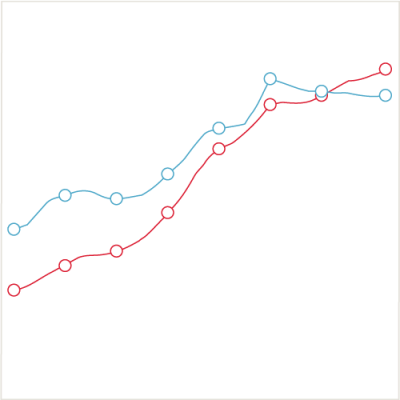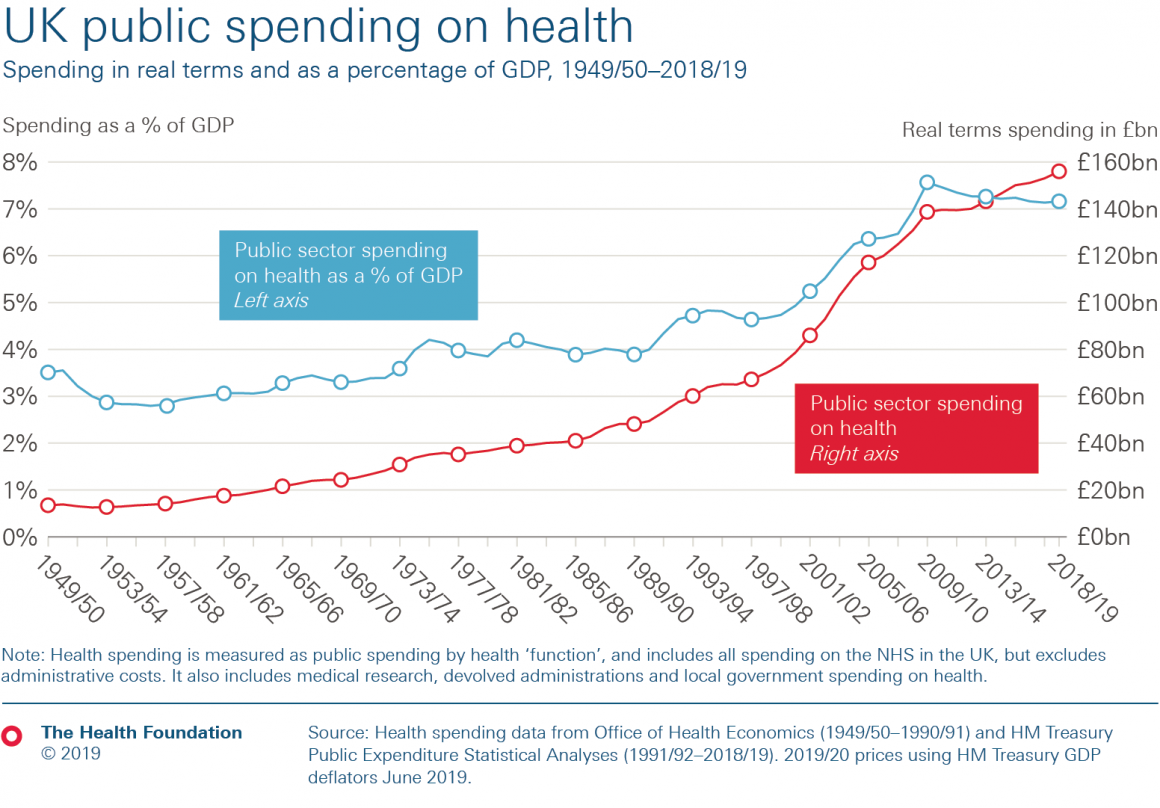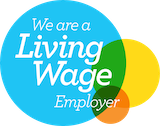Health spending as a share of GDP remains at lowest level in a decade
30 July 2019

Key points
- As a share of GDP, spending on health in the UK in 2018/19 was roughly the same as it was in 2011/12, and is only marginally above where it was in 2008/09.
- This is the result of low growth in health spending, which has risen by 1.6% a year on average since 2011/12, around the same rate as GDP growth.
- This is less than half the long-run trend of growth in health spending, which is 3.6% a year in real terms.
In 2018/19 the UK spent around £153bn on health, in 2019/20 prices. This is an increase of 2% compared to the previous year and is ten times more than was spent sixty years earlier, in 1958/59. On average health spending has increased by 3.6% a year over the history of the NHS as a result of the UK’s growing population, the increasing prevalence of chronic conditions, and the rising costs of delivering care.
However, over the last decade this growth in health spending has slowed, reaching just 1.6% a year since 2011/12. At that point health spending was 7.3% of GDP, a drop since its highest level of 7.6% in 2009/10. Due to low spending growth since that point the NHS has grown at a similar rate to GDP growth, and it now stands at 7.2% of GDP. In terms of growth as a percentage of GDP, the nine-year period since 2009/10 is the lowest since the first decade of the NHS.
As part of the NHS long term plan a five-year spending settlement has been set out for NHS England. If this spending growth is seen in areas outside of NHS England such as capital spending and the public health grant (and replicated in the devolved administrations) then spending could grow to 7.9% of GDP.
Further reading
Work with us
We look for talented and passionate individuals as everyone at the Health Foundation has an important role to play.
View current vacanciesThe Q community
Q is an initiative connecting people with improvement expertise across the UK.
Find out more


